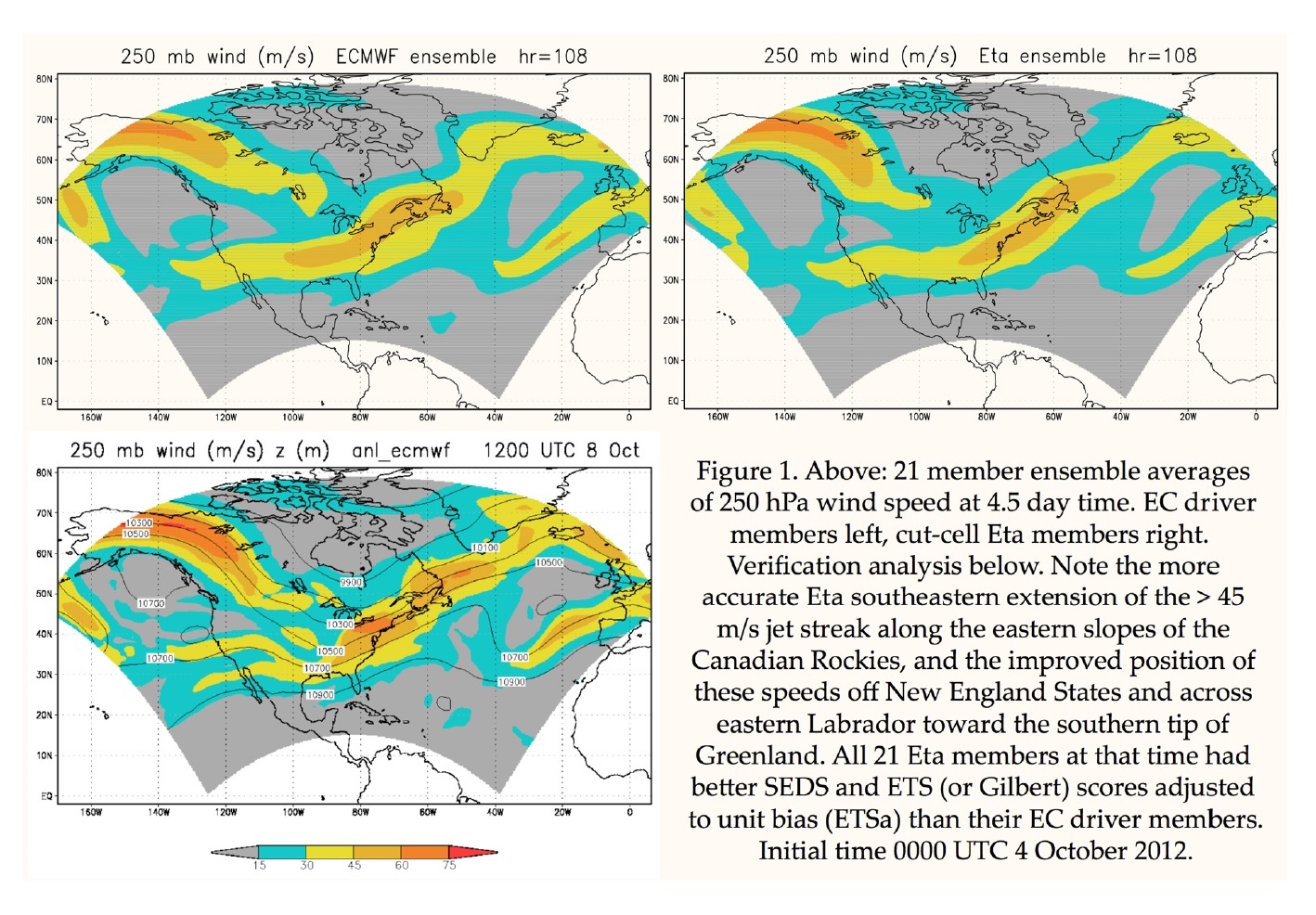Graphical Abstract
Mesinger, F., and K. Veljovic, 2020: Topography in weather and climate models: Lessons from cut-cell Eta vs. European Centre for Medium-Range Weather Forecasts experiments. J. Meteor. Soc. Japan, 98, 881-900. https://doi.org/10.2151/jmsj.2020-050. Graphical Abstract with highlights
Plain Language Summary: Advantages and issues of methods of incorporating topography in weather and climate models are summarized. Terrain-following coordinates used in almost all major models do have issues with steepness of model terrain exceeding a given limit. Immersed boundary methods accept both the grid and the model topography as they are and address prescription of boundary conditions and adjustments of physics parameterizations. Cut-cell schemes prescribe bottoms of their lowest cells to define topography and are able to use finite-volume discretizations. New views are offered via analyses of experiments driving cut-cell Eta by European Centre for Medium-Range Weather Forecasts (EC) 32-day ensemble members.
Highlights:
- Using about the same resolution during the first 10 days of the experiment, at the time of a large scale trough crossing the Rockies topographic barrier, cut-cell Eta members achieved overall substantially better verification scores with respect to 250 hPa wind speed than their EC driver members according to each of three verification scores used;
- A single model experiment of running the same ensemble except for the Eta switched to use the terrain-following sigma coordinate, showed that the terrain-intersecting eta was responsible for a considerable part, but not all, of this Eta added skill;
- Identifying features of the Eta using sigma which could be primarily contributing to this increased skill thus appears as an issue deserving attention.







